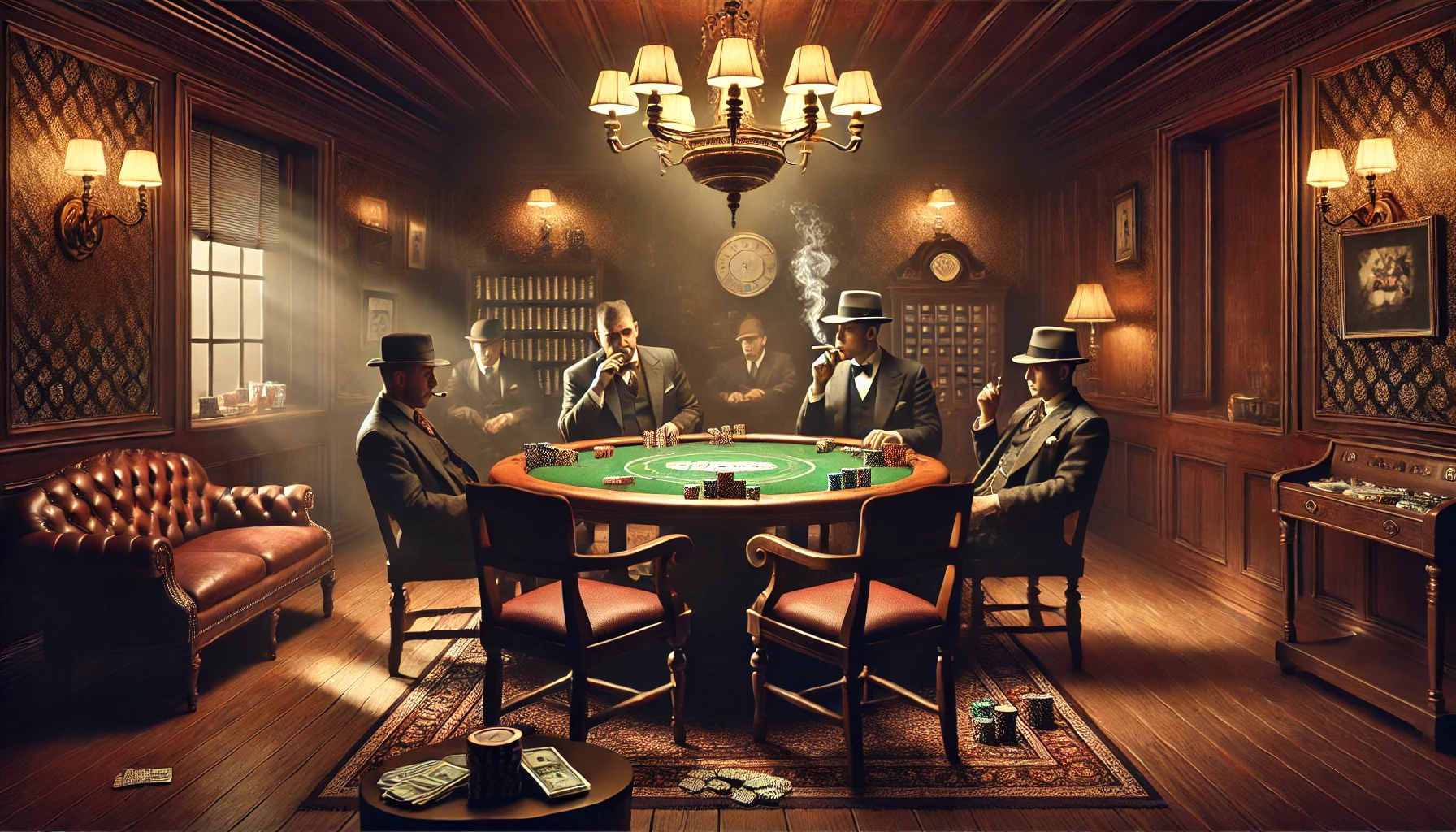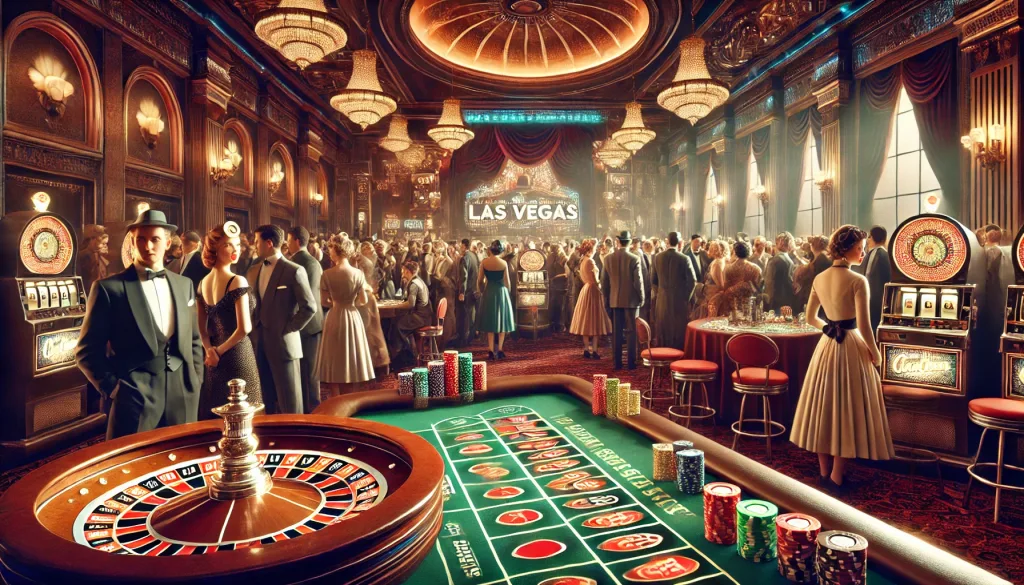
The Mafia’s Role in the Evolution of American Casinos in the 20th Century
Throughout the 20th century, the United States witnessed a significant transformation in its gambling industry, largely influenced by the involvement of organised crime. This article delves into the pivotal role that the Mafia played in shaping American casinos during this era, offering an in-depth analysis of its impact and legacy. The evolution of gambling during this period is a fascinating story of power, ambition, and control, with organised crime leaving an indelible mark on the industry. Understanding the interplay between the Mafia and casinos provides valuable insights into the socio-economic changes of the time.
The Rise of Mafia Influence in American Gambling
The early 20th century was a period of prohibition and economic uncertainty in the United States, which created fertile ground for illegal enterprises. Organised crime, particularly Mafia families, saw gambling as a lucrative venture. During this time, cities like Chicago and New York became hubs for underground casinos and betting rings. By exploiting the lack of regulation and societal demand for gambling, the Mafia cemented its role in the industry. This period also saw the emergence of influential crime figures who would later dominate the gambling scene in larger markets.
Despite its illicit nature, gambling proved immensely popular, leading to widespread societal acceptance even as it remained officially outlawed in many states. This duality provided the Mafia with both opportunity and a cover to expand their operations. In addition, law enforcement often struggled to keep up with the sophisticated networks established by these organisations, allowing the underground gambling scene to flourish.
Prohibition and the Growth of Underground Casinos
Prohibition (1920–1933) was a catalyst for the Mafia’s involvement in illegal gambling. With alcohol sales banned, organised crime families diversified their operations to include gambling. Speakeasies often doubled as gambling establishments, attracting patrons who sought both entertainment and a reprieve from restrictive laws. These underground venues laid the groundwork for the Mafia’s future ventures in legalised casinos. The scale of operations during this era was staggering, with millions of dollars exchanging hands weekly, much of it untaxed and unregulated.
As the federal government struggled to enforce Prohibition laws, the Mafia capitalised on the lucrative combination of alcohol and gambling. The speakeasies became sophisticated enterprises, employing hundreds of people and contributing to the local economy in ways that made them difficult to dismantle. The connections and influence gained during this period set the stage for the Mafia’s foray into legitimate casino ventures in the decades to come.
Las Vegas: The Mafia’s Playground
Las Vegas became the epicentre of Mafia-controlled gambling in the mid-20th century. Following Nevada’s legalisation of gambling in 1931, mob figures such as Bugsy Siegel recognised the city’s potential. Siegel’s creation of the Flamingo Hotel in 1946 marked the beginning of the Mafia’s overt influence in the casino industry. What started as a desert outpost grew into a bustling city, largely fuelled by the funds and ambition of organised crime. Las Vegas became synonymous with glamour and high-stakes entertainment, much of it driven by Mafia interests.
During the 1950s and 1960s, the city saw an explosion of casino development, with many establishments funded through Mafia-backed loans. These casinos offered not just gambling but also luxurious amenities, including fine dining and world-class entertainment. This multifaceted approach attracted tourists from across the country, cementing Las Vegas as America’s gambling capital. However, behind the glitz and glamour, the Mafia maintained strict control over the operations, ensuring their profits through practices such as skimming and intimidation.
Key Players and Their Operations
Notable Mafia figures, including Meyer Lansky and Frank Rosenthal, were instrumental in establishing and running casinos in Las Vegas. These individuals brought organisation and funding to the industry, often using illicit means to secure control. The skim, a process where profits were siphoned off before being reported, became a hallmark of Mafia-run casinos, ensuring steady income for the crime families. Additionally, the Mafia’s reach extended to unions, suppliers, and law enforcement, creating a network of influence that safeguarded their interests.
The personalities involved in this era of Las Vegas are legendary, with tales of both grandeur and ruthlessness. These figures were not only businessmen but also enforcers, ensuring compliance through a combination of charm and fear. Their legacy is a complex mix of economic development and criminal enterprise, shaping the city into what it is today.

The Decline of Mafia Influence
By the 1970s and 1980s, federal crackdowns and increased regulations began to diminish the Mafia’s control over American casinos. The introduction of corporate ownership and stricter oversight made it harder for organised crime to maintain its grip. High-profile investigations, such as the Kefauver Hearings, exposed the Mafia’s activities and led to significant legal repercussions. The hearings were a turning point, galvanising public support for reforms and providing authorities with the mandate to dismantle criminal operations.
During this time, the rise of legitimate casino corporations also played a crucial role in curbing Mafia influence. Companies with significant financial resources and transparent operations began to dominate the industry, gradually replacing Mafia-backed establishments. These corporations brought a new level of professionalism and accountability, aligning the industry with regulatory standards and modern business practices.
Legacy and Lessons Learned
Despite the decline of Mafia involvement, its impact on the casino industry is undeniable. The Mafia’s role in establishing Las Vegas as a gambling hub remains a key chapter in American history. However, the era also underscored the importance of transparency and regulation in ensuring fair practices within the gambling sector. The lessons learned during this time continue to shape policies and practices in the industry, serving as a reminder of the consequences of unchecked power and corruption.
Today, casinos operate under stringent guidelines, but the shadow of their turbulent history continues to intrigue historians and enthusiasts alike. From the opulent casinos of Las Vegas to the underground gambling dens of the early 20th century, the story of the Mafia and American casinos is a compelling narrative of ambition, risk, and transformation.
